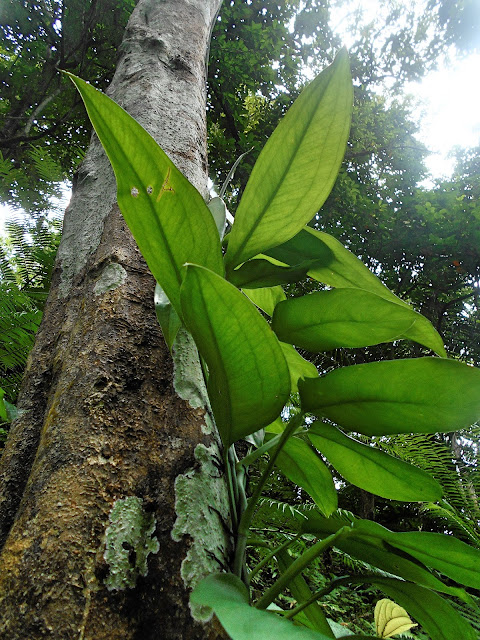Pothos dolichophyllus in habitat
Like an old buddy who I'd like to visit every now and then, these wild Pothos dolichophyllus have become a much-favored plant too see every time I take one of those many silent hikes. Yep, an old buddy that requires you to clamber up cliffs 😅
Most of you might be familiar with the so-called 'Pothos' in cultivation, but those really are variations and cultivars of the commonly cultivated Epipremnum aureum. True Pothos are unrelated and very seldom seen in cultivation: most, if not all, species are true jungle plants that require forest conditions and can be notoriously difficult to root from cuttings.
Now, some of you might remark the Anthurium-ish foliage, particularly the veining. It's because both Anthurium and Pothos are relatives: they belong to the aroid subfamily Pothoideae. While Anthurium is Neotropical and contains the largest assemblage of species of any aroid genus, both Pothos and Pothoidium are Old World representatives of the subfamily.
Pothos dolichophyllus is a Philippine endemic with leaf blades that attain to 16 inches in length. The leaves are quite smooth and rather thin, but has the texture and snappiness of cardboard. Enough introductions.
The Royal Botanic Gardens is one of the very few institutions that cultivate this beautiful species. To see some photos of their plants, please proceed here.










Comments
Post a Comment